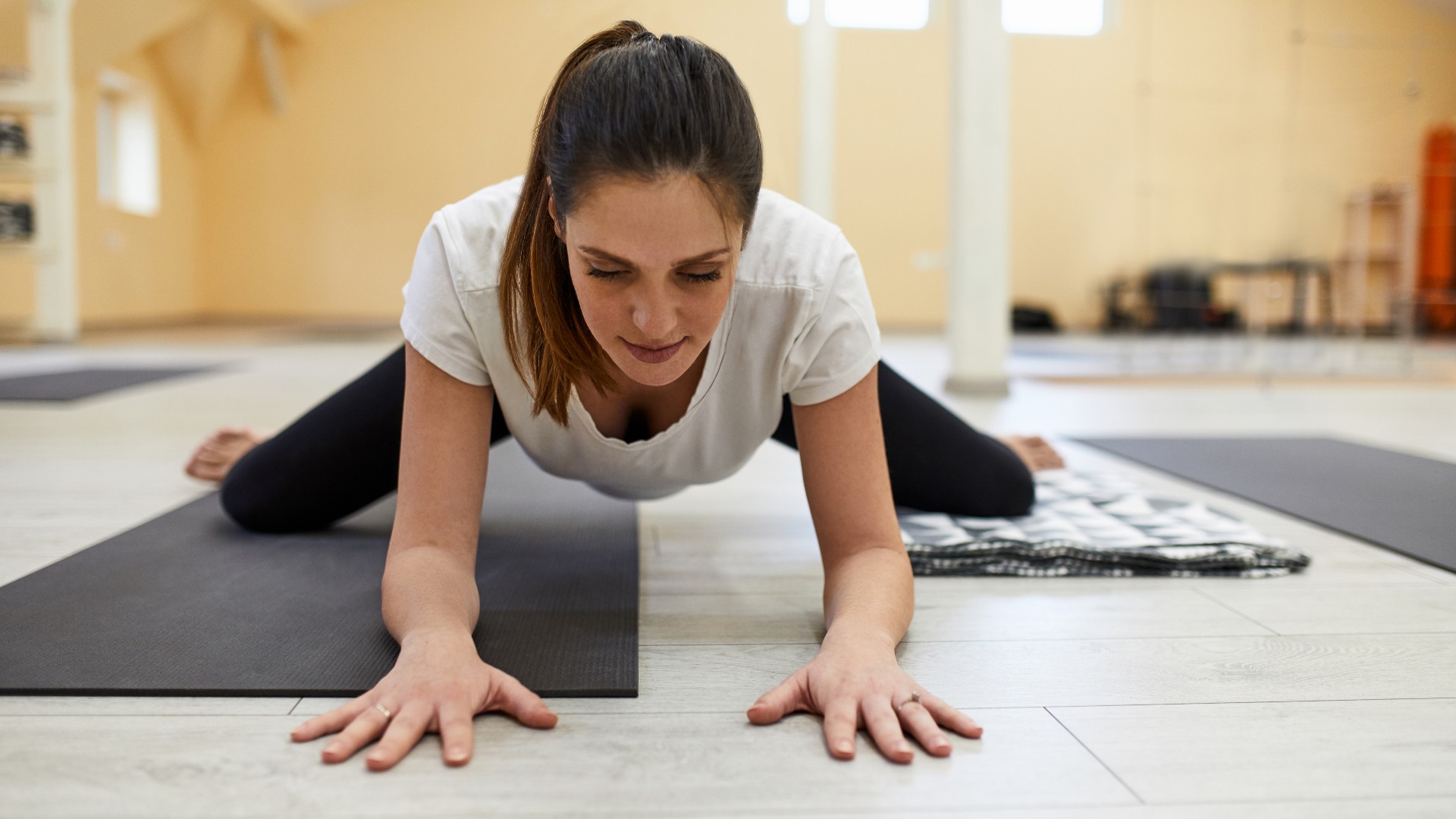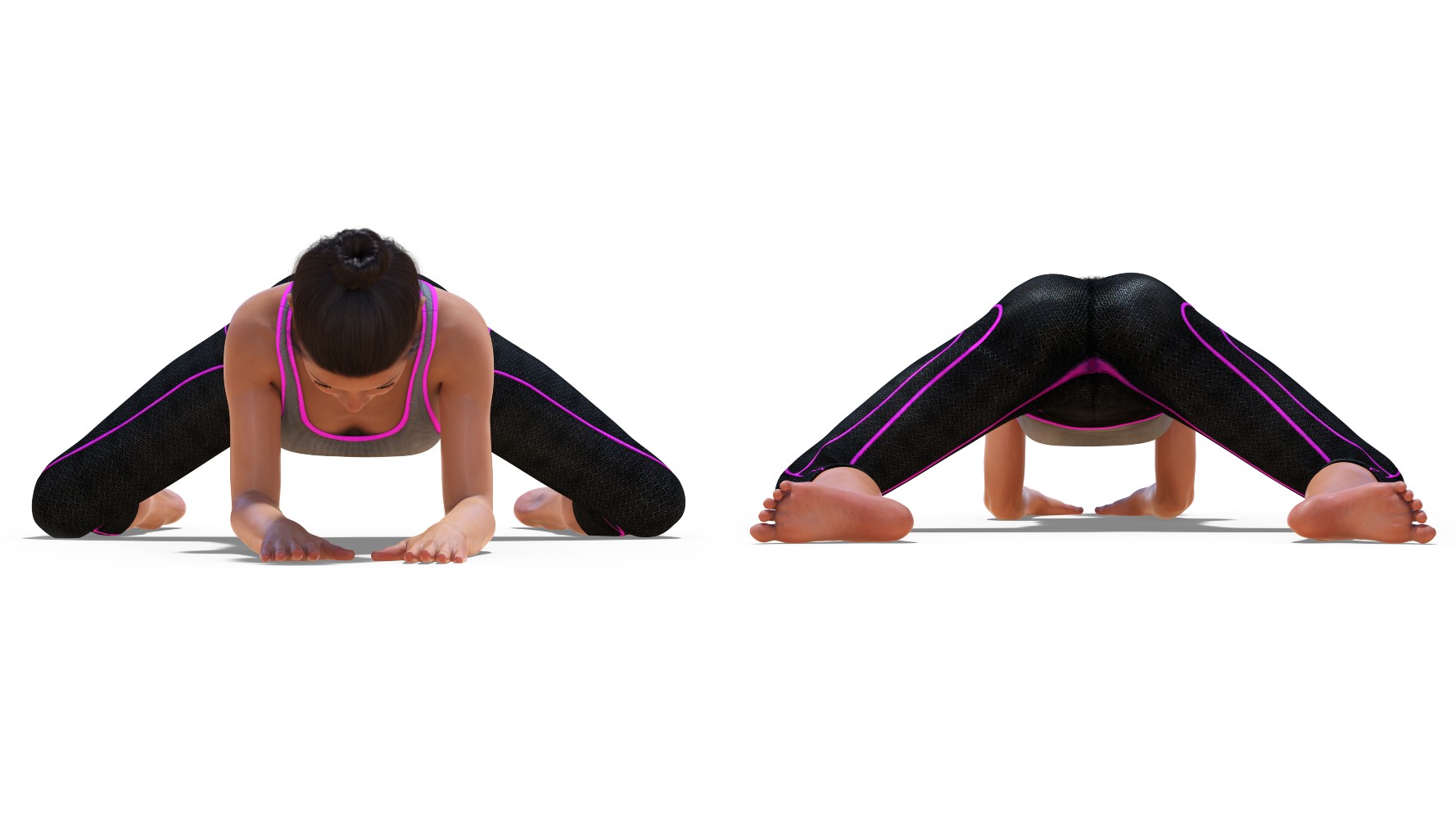
I hold my hands up and freely admit to using the frog pose during cool-downs and my stretching classes with a certain glee when training clients. It's one of my favorite yoga poses to ease nasty symptoms of sciatica, plus it stretches the adductors that run down the inner thighs, the hips and the lower back. Suffering from hip flexor pain? Try this.
The frog pose is capable of developing mobility and flexibility around your hips, improving posture, helping you achieve better depth during squats and lunges and easing tightness in the area. But it's a seriously uncomfortable exercise to do for any length of time, and I know plenty of yogis who dread it.
Translating as Mandukasana in Sanskrit, the popular yoga pose has been made even more trend-worthy by TikTokkers, who scooped up the frog pose and sent it viral. We're talking over 70 million views under #frogpose. There are many benefits to regularly practicing the frog pose, and despite some of the bolder claims surrounding the pose (an improved libido everyone?), there are a good many rooted in truth.
Grab one of the best yoga mats and read on to find out what happened when I did a three-minute frog pose every day for one week.
How to do the frog pose

- Start in a tabletop position on hands and knees
- Shift your weight forwards over your shoulders and slide your knees to the sides, hugging your inner knees into the mat
- Slide your feet outwards so that they’re in line with your knees, with the inner sides of your feet hugging the mat
- Gently push your hips back toward your feet
- If you can, lower your elbows to the floor and rest your head on the mat
- You could also lower your chest to the floor and extend your arms away from you to achieve a deeper stretch.
I did the frog pose exercise every day for one week — here are my results
Walk into any Yin yoga class, and you'll find frog poses cropping up a lot. Frog pose is uncomfortable, looks a bit strange and feels almost unbearable at times, but it's great for the health of your hips, groin and lower back. That said, it's worth checking in mentally to work out if you're in pain or whether the stretch just feels uncomfortable. If it's the former, reduce your range of motion by moving your knees or ankles slightly closer together. Here's what happened when I did it for three minutes every day for one week.
I had to take deep breaths
The frog pose picked up the nickname “the pelvic breaker” because it delivers an intense inner thigh, hip and groin stretch and acts as a deep groin opener. The stretch relies on external hip rotation on both sides of your body, and coupled with a gentle push backward, it can feel mentally and physically challenging. It's especially tough for those, like me, who sit down for long periods.
However, doing it regularly can counteract weak hip flexors and the negative impacts of sedentary lifestyles that cause back pain and tight hip flexors. Because your hips and lower back play a crucial role in posture, a hip flexor stretch could help. And some research has shown that yoga can reduce chronic lower back pain and low-level symptoms, though this isn't specific to frog pose.
Whenever I approach the frog, I take long and deep breaths and use my exhale to deepen the pose. I strongly recommend focusing on your breath and closing down your eyes to help you stay grounded in the moment.
I felt emotional
I know, weird one, right? But it's fairly normal. Yoga teachers call the hips the "seat of emotions," which refers to the hips as a storing place for stress and anxiety. Although the theory isn't backed up by a wealth of research, there's some truth to it.
The adrenal glands are responsible for the “fight-or-flight” stress response when we experience high stress levels. They sit at the top of your kidneys, and the fascia surrounding your psoas (the deep hip flexor muscles) also connect with the kidneys. The psoas can be known as the “fight-or-flight” muscle. It's believed that during stressful times, the psoas muscle contracts and tightens in response. Because the psoas is also attached to the diaphragm, breathing could be affected, so hip stretches can help release tension and reduce feelings of anxiety.
The frog pose picked up the nickname “the pelvic breaker” because it delivers an intense inner thigh, hip and groin stretch.
Many leading yoga schools discuss it, and some studies show that slower-paced Yin Yoga (a yoga style that includes long static stretches like Frog pose) can relieve stress and improve sleep due to its meditative nature and breathwork focus. That said, we’re lacking any extensive research in the field.
Personally, I experience all of the feels when performing a frog pose for several minutes. I move through anger and impatience to an emotional place. It's strange, but it happens every time. Eventually, I always meet frog pose with relaxation and calm.
I felt amazing
Studies and research aside, I get a deep sense of relaxation from the frog pose, and my hips and groin love me for persevering. Mentally, I find myself more relaxed, while physically, I feel more open. It's a great posture for developing a strong meditation practice, which can just mean a few minutes of breathwork if you don't enjoy it.
Although static stretches should be reserved for post-workout cool-downs, I sometimes add the frog pose into my pre-workout routine alongside a gentle rocking motion to help open my hips and boost flexibility before lifting heavy weights. Coupled with other dynamic and sport-specific stretches, it's a great way to improve the range of motion and counteract the effects of sitting throughout the day.
I also use this stretch with my dad (I train him twice a week), and I've seen marked improvements very quickly in his posture and lower body flexibility using the frog, which goes to show what regular practice can do.
If you find the frog pose unbearable to hold (again, discern between actual pain and feeling uncomfortable), I recommend this 5-minute breathing exercise to take your mind off the stretch.
Bottom line
Frog pose can help those with tight hips or lower back pain, but if you suffer from bad knees, I recommend skipping this exercise and using a yoga for knee pain sequence instead.
If you're ever unsure, speak with a qualified medical professional or yoga teacher before trying any new yoga exercises or training programs. Most importantly, don't rush. The pose takes a while to develop and I recommend moving gradually. Start with your heels close together, then move your knees and heels further apart as you build flexibility. I know many people who prefer to roll a yoga mat underneath the knees or pop a light cushion down for extra support. Personally, I enjoy sitting on a bolster or yoga block to take some weight off.







